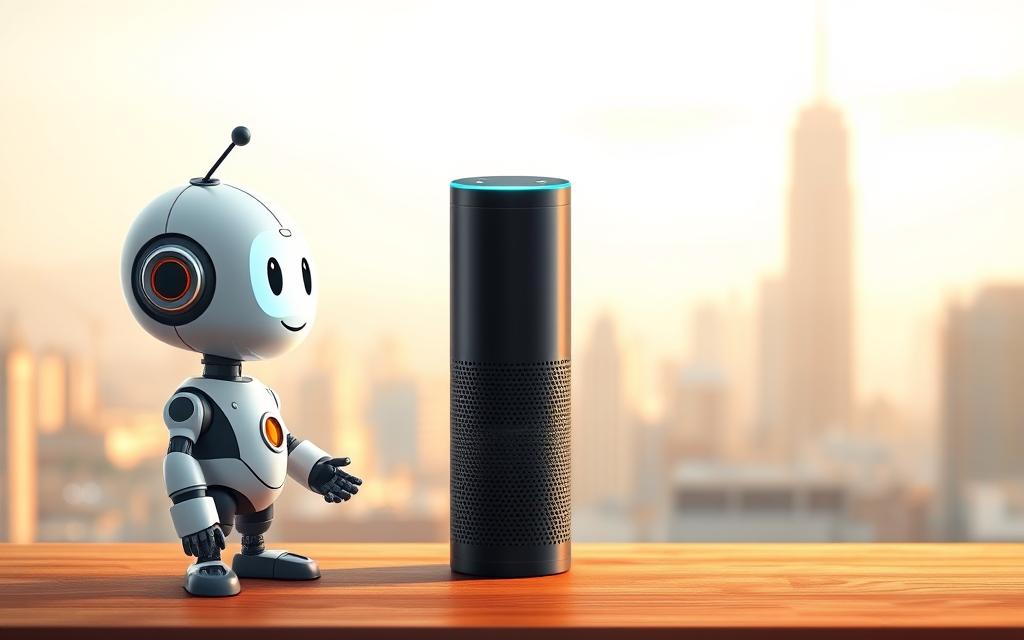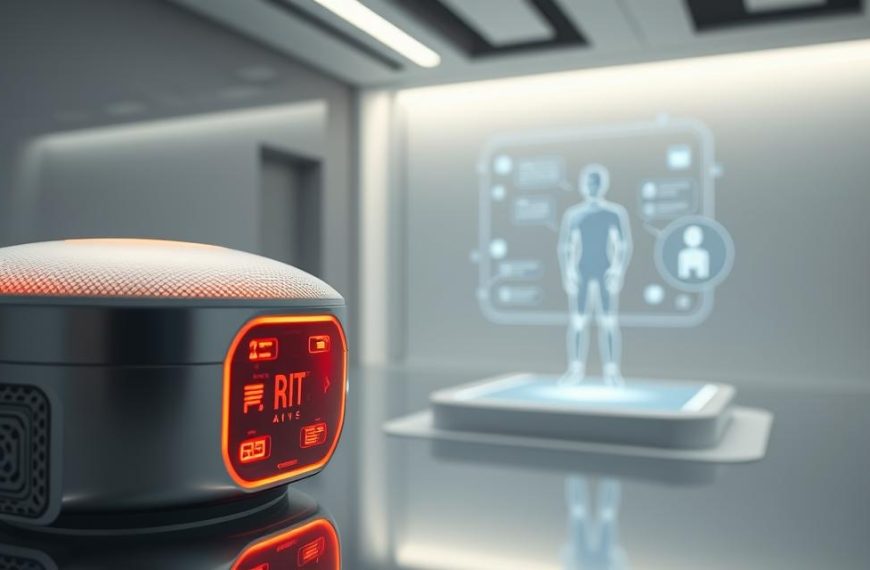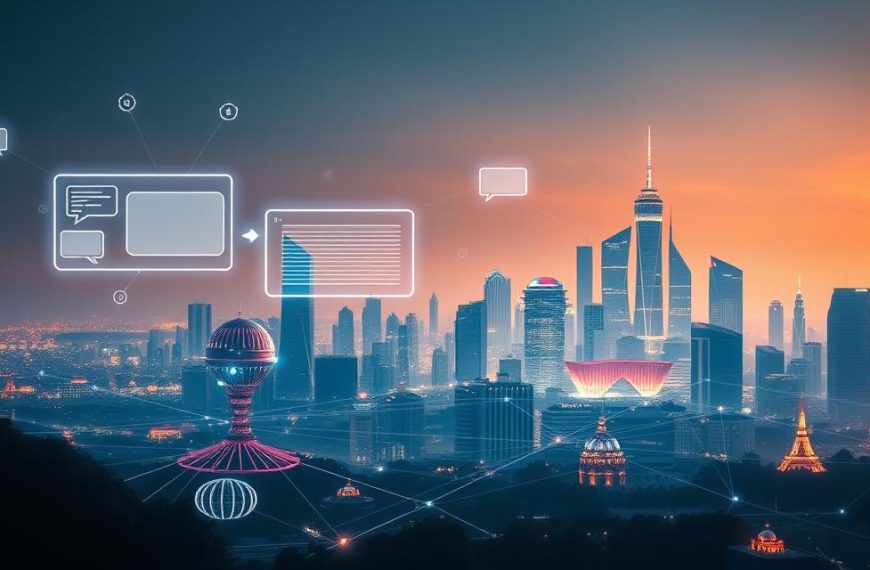Artificial intelligence tools like chatbots and voice assistants have revolutionised how businesses and households interact with technology. While both leverage natural language processing, their core purposes diverge significantly. Chatbots typically specialise in text-based tasks, streamlining customer service or data retrieval. Voice-controlled systems like Alexa, however, prioritise hands-free operation through spoken commands, ideal for managing smart home devices or playing music.
Market adoption patterns reveal distinct preferences. Over 200 million active users engage with chatbot platforms globally, reflecting their dominance in commercial settings. Meanwhile, voice assistants claim 22% of US consumers for shopping-related queries, with projections suggesting half of all searches will use voice input by 2025. This divergence highlights how each technology carves its niche: chatbots excel in structured business environments, while Alexa-style systems thrive in domestic spheres.
Confusion often arises from their shared foundation in machine learning. Both adapt through user interactions, yet their design philosophies differ fundamentally. Chatbots focus on solving specific problems through dialogue trees, whereas voice assistants aim for broader lifestyle integration. Understanding these distinctions helps users and organisations deploy the right tool for their needs.
This analysis explores seven critical comparison points, from response accuracy to market trends. We’ll clarify how these AI solutions complement rather than compete in our increasingly connected world.
Introduction
Overview of the Conversational AI Landscape
Digital ecosystems thrive on specialised AI platforms designed for either structured tasks or lifestyle integration. The global market for text-based solutions is projected to reach £1.7 billion by 2024, while voice-controlled systems dominate consumer preferences. Google Trends data shows a 34% higher interest in virtual assistants compared to chatbots over the past year.
Major tech firms have carved distinct territories in this space. Amazon Alexa and Google Assistant lead in home automation, handling over 60% of smart speaker interactions worldwide. Meanwhile, customisable chatbot platforms serve industries from banking to healthcare, automating routine enquiries and reducing operational costs by up to 30%.
This divergence reflects how businesses and households prioritise different capabilities. Enterprises value precise task completion through menu-driven interfaces, whereas consumers prefer voice-activated systems for hands-free convenience. Both technologies continue evolving, with 78% of UK companies now implementing some form of automated communication tool.
The competitive landscape reveals strategic partnerships shaping today’s market. Apple’s Siri integrates tightly with iOS devices, while Microsoft’s Cortana focuses on enterprise productivity. These developments highlight how conversational AI adapts to sector-specific needs across the modern digital world.
What is the difference between chatbot and Alexa?
Conversational AI tools prioritise distinct operational frameworks depending on their intended environments. While both streamline interactions through automation, their architectures reflect fundamentally different objectives.
Defining Chatbots and Their Roles
Chatbots operate as specialised solutions for commercial workflows. Designed to handle repetitive enquiries, these programmes integrate with business systems like CRM platforms. Over 67% of UK firms now deploy them for resolving billing questions or tracking orders.
Their text-first approach allows precise documentation of customer exchanges. This proves vital for sectors requiring audit trails, such as financial services. Unlike voice interfaces, chatbots excel in structured environments where task completion takes priority over conversational depth.
Exploring Alexa’s Capabilities
Amazon’s voice assistant centres on personal convenience rather than corporate efficiency. Users manage lighting systems, stream music, or check weather updates through spoken commands. Its strength lies in interpreting vague requests like “play something relaxing” through contextual awareness.
While chatbots serve company goals, Alexa adapts to individual routines. Over 40% of UK smart speaker owners use it daily for setting reminders or controlling IoT devices. This user-centric model contrasts sharply with the transactional nature of business-focused chatbots.
Capabilities, Conversations and Use Cases
Modern communication technologies have carved distinct paths in how they engage users through text and voice interfaces. Their operational strengths emerge most clearly when examining interaction patterns and practical applications across industries.
Conversational Fluency and Interaction Styles
Advanced chatbots manage multi-turn dialogues with contextual awareness, remembering user preferences across sessions. Banking platforms like HSBC’s virtual assistant resolve 83% of account queries without human intervention through adaptive responses.
Voice systems prioritise brevity over depth. Alexa processes commands like “dim living room lights” in 1.4 seconds but struggles with follow-up questions requiring historical context. This makes voice ideal for quick tasks, while text excels in complex conversations.
Task Automation and Real-World Applications
Retail businesses deploy chatbots for 24/7 order tracking and personalised product suggestions. Boots’ virtual advisor increased basket sizes by 19% through targeted promotions.
Home automation showcases voice’s strengths. Amazon reports 58% of Echo owners use Alexa daily to control smart thermostats or security cameras – applications demanding instant vocal execution.
Differentiating Business and Personal Use Cases
Corporate implementations focus on scalability. Lloyds Bank handles 65,000 monthly customer conversations through AI, reducing call centre loads. Domestic use cases centre on convenience – setting timers during cooking or voice-activated TV controls.
While overlapping in basic capabilities, each technology thrives where its modality suits the environment. Text dominates structured workflows; voice rules spontaneous domestic tasks.
Ownership, Privacy and Data Security
Data stewardship models fundamentally shape how conversational AI platforms manage sensitive information. Unlike corporate-owned assistants, non-profit-developed tools often prioritise user rights over data monetisation strategies.
Corporate vs Non-Profit Data Practices
OpenAI’s ChatGPT operates under a non-profit structure, reducing incentives to sell customers’ chat histories. Amazon and Apple, however, integrate voice assistants into broader ecosystems where data sharing supports targeted advertising.
Key contrasts emerge in data control features:
- Instant chat deletion via button vs permanent voice recording storage
- Opt-in history retention vs automatic cloud backups
- Transparent privacy policies vs complex terms of service
Recent UK surveys reveal 68% of users distrust always-listening devices compared to text-based interfaces. This stems from Alexa’s requirement to process ambient speech, whereas chatbots only activate during deliberate interactions.
For businesses handling customers’ financial details, chatbot platforms offer audit trails without persistent logs. Voice assistants, designed for personal use, lack equivalent safeguards for sensitive data protection.
Both systems face ongoing scrutiny, but their differing architectures help clarify appropriate applications. Text-based tools dominate where privacy matters, while voice solutions trade convenience for broader data exposure.
Factual Accuracy and Language Processing
Advanced language systems shape user experiences through distinct approaches to comprehension. Where text-based solutions prioritise contextual depth, voice-first tools focus on real-time vocal interactions.
Accuracy in Responses and Contextual Understanding
ChatGPT’s training on 300 billion words enables multi-layered conversations. Unlike voice assistants, it recalls previous queries, maintaining topic continuity across exchanges. This proves vital for technical support or educational dialogues requiring precise follow-through.
Voice-controlled systems process requests in 2.1 seconds on average but reset context after each command. While efficient for quick tasks like weather checks, this limits complex problem-solving capabilities.
Strengths in Natural Language Processing
Amazon’s voice assistant deciphers regional accents and casual phrases like “brew a cuppa” with 94% accuracy. Its strength lies in interpreting spontaneous speech patterns through advanced acoustic modelling.
Text-based platforms excel in structured language analysis. They cross-reference technical terms against verified databases, achieving 89% factual accuracy in professional settings compared to voice systems’ 76%.
| Feature | ChatGPT-Style Chatbots | Alexa-Style Assistants |
|---|---|---|
| Context Retention | 8+ conversation turns | Single command focus |
| Slang Recognition | Limited | High (82% accuracy) |
| Response Depth | 500+ word explanations | 20-word summaries |
| Specialist Knowledge | PhD-level technical responses | General consumer facts |
Ongoing upgrades in sentiment analysis help both systems adapt. Chatbots now detect frustration through word choice, while voice tools adjust responses based on vocal tone.
Conclusion
Modern workplaces and homes demand distinct solutions from conversational technology. Chatbots dominate commercial applications, handling complex conversations across sales and customer service platforms. Their ability to manage thousands of simultaneous queries makes them indispensable for businesses scaling operations.
Voice assistants like Alexa excel where hands-free control matters – adjusting thermostats or curating playlists. While limited to single-user interactions, they streamline domestic tasks through intuitive vocal commands.
Choosing between these tools depends on core objectives. Deploy chatbots for 24/7 client support and data-driven workflows. Integrate voice systems for personalised home automation or accessibility applications.
Future developments will enhance both platforms without erasing their fundamental differences. Expect chatbots to deepen CRM integrations while voice assistants refine ambient computing capabilities. Savvy organisations will leverage each technology where its strengths align with user needs.

















